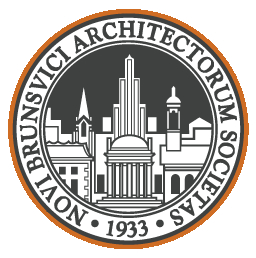This CE Center article is no longer eligible for receiving credits.
Residential design and construction have benefitted from both tradition and innovation in the United States. Traditional design styles are embedded in American culture based on multiple cultural influences. Traditional construction methods are centered around wood framing and product types that originated in the 19th and 20th centuries. Building on this long-standing base, innovation has taken hold in many aspects of residential design and construction in the form of new construction systems, enhanced materials, and more sophisticated products. All these advances offer higher performance, better quality control, and more flexibility in design. In this course, we will look at three such innovations, including ways to turn roof areas into outdoor terraces, the sustainable use of natural redwood, and the use of high-performance glazed walls. Each of these innovations is discussed in some detail, with case studies provided for context.

Photo: Casey Dunn Photography; courtesy of LaRue Architects
New design approaches, construction techniques, and building products have moved residential design and performance to higher levels than previously possible.
Roof Terraces and Outdoor Spaces
It is very common for homeowners or tenants of residential buildings to desire some connection to the outdoors as part of their living spaces. This has certainly been intensified during the COVID-19 pandemic with many people spending more time at home. This desire is in line with a sense of health and wellness too, since it is generally recognized that regular interactions with the outdoors can lower blood pressure, reduce stress, expedite healing, improve mood, and help with focus.
Recognizing this need for outdoor spaces, the residential design question becomes how best to achieve it. In low-density housing situations, yards and grassed areas are common, but so are decks and terraces. In higher-density, urban settings, the creation of outdoor spaces requires more design thought. In the quest for finding a suitable outdoor space, many architects look to a flat (i.e., low-slope) roof or terrace area on a multistory residential building. Of course, this presents the challenge of protecting the roof while still creating an appealing, natural outdoor space.
An innovative solution to this multifaceted challenge uses adjustable-height pedestals that sit on top of the roof membrane and allow the top surface to be leveled. Modular wood tiles or pavers then rest on top of the pedestals and allow rainwater to pass through the joints and down onto the roof. The complete system allows for an inviting, natural, level surface that protects the roof and creates a continuous, safe walking surface. The pedestals are used in a variety of spaces, such as balconies, rooftops, and on-grade applications. They can help transform underutilized outdoor spaces or otherwise wasted spaces into functional outdoor amenities, such as kitchens, bars, lounges, or garden areas.
Mark Fusco, LEED AP, GRP, who is the national sales manager for Bison Innovative Products, has witnessed this firsthand. He points out that architects have been incorporating more roof decks into their projects because of the availability of these systems. “Architects can now design and specify tested, innovative systems for raised decks, including rooftop decks, terraces, and other architectural features. Further, they can do so using maintenance-free adjustable pedestals and low-maintenance deck surfaces,” he says.

Photo: Bill Horsman; courtesy of Bison Innovative Products
A roof terraces provides residents with a means to connect with the outdoors and can be designed as an appealing living amenity.
Designing Modular Roof Decks
Part of the appeal of a manufactured roof deck system is that it is typically based on a modular system of components. Such systems give architects the design flexibility to create unique and beautiful rooftop environments and outdoor spaces, all while controlling the budget. The primary components of such a system are as follows.
Deck Supports/Pedestals
Adjustable pedestals are the fundamental support system for the deck and have become recognized as one of the most labor- and cost-efficient methods of creating a level deck over a moderately sloped surface. The location of the pedestals is typically based on a modular layout that follows the size of the material used on the deck surface. Commonly, this is a 2-foot x 2-foot square grid, although many other sizes are possible as well. Adjustable pedestals are available in a range of heights and weight-bearing capacities to suit a variety of conditions or needs. Those decks carrying more weight or requiring more height to achieve a level condition will need a higher grade of pedestal.
Many commercially manufactured pedestals are made with high-density polypropylene plastic that is 100 percent recyclable. This material choice means that the pedestals are essentially impervious to common outdoor concerns, such as water, mold, and freeze-thaw cycles. As part of a gravity-based system (i.e., no roofing penetrations required), the pedestal supports protect the roof and waterproofing membranes below without causing damage or harm. Pedestal deck systems can also be utilized over any other structural surface, such as on bare structural decks, rooftop decks, existing plazas/terraces, compacted grade, pavement, pool surrounds, inside of water features, or even between green roof areas.

Photo: Anthony Carrino; courtesy of Bison Innovative Products
Adjustable-height pedestals are the first component to be installed in a standard modular grid pattern to suit the project's needs.
Deck Surfaces
The versatility of adjustable pedestal deck supports means that they can be used to elevate a variety of decking surface materials. The common options include pavers made from concrete or stone, such as granite or travertine. Similarly, structural porcelain tiles, fiberglass grating, composite materials, or conventional wood decking systems can be used in a grid pattern to meet different design requirements. Typically, a galvanized steel paver tray is installed on top of the pedestals to support structural porcelain pavers or others. Surface materials can be removed for routine maintenance, repairs to the roof, or to gain access to other systems.
If a lighter-weight surface material is preferred or needed, wood tiles are a good alternative, as they weigh only one-third as much as concrete tiles. Typically made from hardwoods in a variety of species, wood tiles are commercial grade and available in standard, responsibly harvested, and Forest Stewardship Council (FSC)-certified hardwood options. If maintaining the wood color is desired, wood tiles can be periodically cleaned and sealed. Left to weather naturally, they will develop a silvery-gray patina.

Photo courtesy of Bison Innovative Products
Outdoor balconies and terraces can use raised pedestal systems to support a variety of modular surfaces,
such as the tiles shown here.
Other Deck Design Options
Green roofs are increasingly popular to expand usable roof space, add gardens, and control rooftop drainage. Designs that include green roofs typically demonstrate an imaginative use of materials that minimize maintenance and the environmental footprint of the building. By incorporating a pedestal system into a green roof, a pedestrian walkway can be provided, which keeps footsteps off the vegetation and allows it to grow properly. It also provides controlled access for maintenance of the green roof or other rooftop items.
The cavity space created by the pedestals between the deck and the roof can be used strategically to allow for electrical wiring, recessed lighting, ductwork, and even irrigation. This means the deck itself or spaces below it can be serviced based on the needs of a project. This can also enhance the ambiance of the outdoor space and improve visibility and safety during nighttime and other dark conditions.
Of course, the deck does not need to cover the entire roof in any of these scenarios. It can be sized to suit the needs of the project such that it avoids other rooftop equipment or features, provides a geometry that is visually interesting, or is just sized to accommodate the programmatic needs of the space.
Site Furnishings
Modular wood cubes are available with an array of design options to incorporate seating, storage, and planters. Such cubes are available with a polyurethane lining and drainage holes to host plant life. At other times of the year, the cubes can be repurposed for seating and storage of seasonal items (i.e., cushions and pillows) by placing a manufactured hardwood top on the cube.
If a different look is desired, aluminum cubes are also an option. Designed to withstand temperature extremes, these low-maintenance, durable planters are constructed of lightweight, partially recycled aluminum. Some use an industrial strength powder-coated finishing process that is applied electrostatically and cured under heat, creating a more resilient finish than conventional paint. There are a variety of size and color choices available.
Overall, from reclaiming unused space in the city to creating a relaxing retreat in the suburbs or a luxurious oasis near water, pedestal rooftop decks can be a solution for a variety of residential designs, allowing for great flexibility and creativity. Further, through use of modular design components, an abundance of different design visions can be created that allow for quick and easy installation without the need for custom or costly materials.
Versatile Redwood Decking
Outdoor decks and terraces of all types are popular on residences across the United States and Canada. For conventional, framed construction, there has been a surge of innovative decking products that are made from a combination of wood fiber and different types of plastic materials. These composite decking materials are sometimes selected and used based on an objective of finding a low-maintenance option that can blend with the residence and other deck components (e.g., railings, stairs, etc.). However, the plastic ingredients in these composite products raise questions about their structural performance (they are typically not as strong or rigid as solid wood) and their stability over time since they usually need plenty of room for expansion and contraction as their temperature changes. There is also the question of sustainability since the plastics are in fact petrochemicals that can contribute directly to negative environmental impacts.
This is a case where a traditional material is being looked at more closely as a preferred alternative compared to a newer, human-made one. That material is natural redwood decking, which is regarded as one of nature’s finest and strongest building materials. Structurally, redwood has a shear strength up to five times greater than plastic and composite decking. From a durability standpoint, redwood is known to be naturally resistant to decay and termites. This was first discovered in redwood forests in California, where fallen trees were found to have been laying on the ground for decades with no visible sign of any significant decay—very unlike other trees that can decay naturally quite quickly.
Regarding the appearance, many designers agree that no other decking material mimics the natural beauty and warmth found in real redwood deck boards and accessories. Its rich, warm color and grain pattern look great when installed and maintains its appeal even with age. Redwood can be left untreated due to its natural resistance properties and allowed to patinate over time, or it can be stained or finished to preserve a particular color and look. Either way, it is a lightweight wood that is easy to work with, which helps control overall construction costs.
Redwood decking naturally achieves a Class B flame spread. This means it is approved for use in California’s Wildland Urban Interface (WUI) fire-hazard severity zones without restriction. For situations where a higher degree of fire resistance is needed, it can be treated to achieve a Class A flame spread using proven and tested processes that are registered with building code authorities.
The design flexibility and performance characteristics of redwood decking mean it can be used in either renovation projects or new construction. Redwood decking also works well with innovative, newer deck components, such as glass panel railing systems or cable railings. The warmth of the wood complements a variety of the other materials, like glass and metal.

Photo courtesy of Humboldt Sawmill Company
Redwood has long been prized for its warm appearance on deck floors and ceilings, as well as its natural durability and longevity.
Sustainability and Redwood Decking
For a period of time in the 20th century, there was a concern that different species of wood, including redwood, were being over harvested and their use was not sustainable. That concern has led to the creation of organizations like the FSC and others that have developed processes to ensure that wood as a natural resource is treated sustainably and responsibly. According to its website (www.fsc.org), “FSC is an international organization that provides a system for voluntary accreditation and independent third-party certification. This system allows certificate holders to market their products and services as the result of environmentally appropriate, socially beneficial, and economically viable forest management.” For architects and building owners, this means that products that meet the FSC criteria are certified as a sustainable product.
The FSC offers several different types of certifications for companies that grow, harvest, process, and deliver sustainably produced wood, including redwood. These certifications include:
- Forest Management Certification: It states, “FSC Forest Management Certification confirms that the forest is being managed in a way that preserves biological diversity and benefits the lives of local people and workers, while ensuring it sustains economic viability.” To receive FSC forest management certification, 10 principles must be adhered to by a forest operation. These principles include things like maintaining high conservation values, community relations, and workers’ rights. There are also requirements for monitoring the environmental and social impacts of the forest being managed. Each principle has criteria that are the practical means of determining whether the principles are being complied with. These principles and criteria are applicable worldwide and usable in all kinds of forest ecosystems and most cultural, political, and legal settings.
- Chain-of-Custody Certification: FSC Chain-of-Custody Certification is a standard used to verify that materials harvested from a certified forest have been identified and separated from noncertified and noncontrolled material. This is important because wood moves through a supply chain, from the forest to the market, and can change hands and ownership multiple times along the way. Having a process to differentiate FSC-certified material from noncertified material helps ensure that the products used on a construction project are in fact sustainable. Hence, the FSC allows organizations of all sizes and types to have the opportunity to qualify for Chain-of-Ccustody Certification, including single site, multi site, and groups of organizations.
The certification process is an important step in verifying that wood products used in construction are in fact sustainable. Therefore, any design professional or homeowner concerned about the environment or those with a preference for all-natural materials are well served by specifying FSC-certified redwood.

Photos courtesy of Humboldt Sawmill Company
Forest Stewardship Council (FSC) certification is one way to ensure that redwood products make their way from a sustainably managed forest all the way to a particular residential project (left). Environmental product declarations (EPDs) are used to communicate the life-cycle assessment (LCA) of different building products, including redwood.
Life-Cycle Assessment of Redwood Decking
The most accepted means of determining the overall sustainability of any building product is to conduct a life-cycle assessment (LCA) of the product. The Consortium for Research on Renewable Industrial Materials (CORRIM) in association with the California Redwood Association conducted a cradle-to-grave LCA on redwood decking in comparison to alternative decking products.
The LCA looks at the entire life of a building product, in this case redwood decking. It begins with the forest management (the “cradle”) and moves through the harvesting, transporting, and processing into decking products ready for delivery (the “gate”). It continues with transporting to wholesale/retail outlets, delivery to a job site, installation, service life (the “use phase”), and finally to removal and recycling and/or disposal (the “grave”). Each of these steps in the life cycle of the product is assessed in five common impact categories, which include 1) Global Warming Potential, 2) Ozone Depletion Potential, 3) Acidification Potential, 4) Smog Potential, and 5) Eutrophication Potential.
Environmental Product Declaration
The results of the LCA are best communicated in a standardized format known as an environmental product declaration (EPD). The use of EPDs in the construction industry has become recognized as a means of providing total environmental transparency in building products so that architects, owners, and others can compare different products and make the best decisions on which products to use. What is the environmental performance of redwood decking versus other non-wood alternatives? Based on findings in the LCA and associated EPD, it is generally much better.
In the redwood decking LCA and EPD, a significant environmental advantage is accounted for. Since redwood trees, like all other trees, consume carbon dioxide and emit oxygen, they naturally sequester carbon dioxide and thus remove it from the atmosphere. This directly helps to offset the global-warming issues caused by excess carbon dioxide emissions from other sources. As such, it is common to see wood products, including redwood, listed in an EPD with a negative number for global-warming potential. In fact, the amount of carbon stored in redwood decking is equivalent to about 10 times the total carbon dioxide emissions released during the manufacturing process.
Regarding the other impact categories, redwood performs favorably as well, particularly compared to other building products such as composite or petroleum-based plastic decking. Low carbon emissions during the manufacturing process and carbon storage during the service life of a redwood deck are both positive environmental attributes that should be considered when selecting a decking product.
A summary of the results as shown in the EPD for redwood are shown in the table below. This data can be compared to other such EPD tables for other decking products to determine comparative differences. Note that the unit of measurement is one square meter of redwood decking.
Jessica Hewitt is the Director of Marketing at the Humboldt Sawmill Company in Scotia, California. She has observed that “Segments of the population, often those that have attained higher education levels, prefer more sustainable materials.” As shown in the preceding paragraphs, redwood can help to meet this preference in beautiful, durable, and intelligent ways.

Source: Environmental Product Declaration for Redwood Decking prepared by UL Environment for the American Wood Council and the California Redwood Association
Innovative Residential Fenestration
In many contemporary buildings, residential or commercial, the use of large areas of glass are incorporated into the design. There are many different design reasons for this, ranging from the capturing of views, the creation of a dramatic space, visual connectivity to the outdoors, and the capturing of sunlight for solar gains in the heating season. The performance of these large, glazed areas is an equal concern to the design considerations, however, and there have been many innovative developments to improve on the traditional means of adding fenestration to buildings.
Typically, the most common means of adding glass and glazing to a residential design has been to use individual window products that are inserted into framed openings. While this is effective in many cases, there are size limits based on the materials used and the type of glass incorporated. Commercial buildings, on the other hand, have had other options available, particularly where fixed glass is preferred. These include aluminum storefront glazing systems and curtain-wall systems. A recent innovation by several window manufacturers has been to offer a similar choice for residential designs as well.
Residential Curtain Walls
Curtain walls are generally defined as non-load-bearing glass wall systems that hang (like a curtain) in front of or between floor structures. The framing is attached to the building structure and does not carry the floor or roof loads of the building. As such, curtain walls provide a means for glazing an entire single-story or multistory facade that may reach heights of up to 20 feet, depending on the design of the building. Curtain walls are usually front glazed over the support framing of vertical and horizontal members. They also incorporate a self-draining design and can be either prefabricated by a supplier or fabricated on-site from individual components.
Curtain walls have been used for decades on commercial buildings, and they have proven to be quite popular and perform very successfully. It is not surprising then that the same product engineering principles have been applied to create innovative residential curtain-wall systems. However, there are some notable differences between commercial and residential curtain walls, including:
- Different expectations: Curtain-wall systems for residential construction must be different from commercial use in terms of fit, finish, and aesthetics.
- Operable fenestration: A curtain wall for residential use should allow for multiple configurations of operating windows and doors as well as fixed glass.
- Structural integration: Residential curtain-wall systems can be designed for load-bearing applications, if required.
There are several beneficial characteristics provided by residential curtain walls that meet or exceed these differing requirements. First, curtain-wall systems can replace some traditional window walls that have individual windows that are mulled together. Mulled units have innate disadvantages such as increased weight, reduced glass area, and discontinuous connection points. Mulling on-site can also be difficult and require additional time and costs. Second, residential curtain walls provide cleaner, more streamlined aesthetics to home designs. The use of hidden connectors and continuous visible wood lengths allow for clean, finished joints. There is also the benefit of a cleaner, less-obstructed view.

Photo: Casey Dunn Photography; courtesy of LaRue Architects
Residential curtain walls are an innovative glazing option that builds on the success of commercial curtain-wall systems but with fabrication and detailing specifically suited to residential projects.
Timber Curtain Walls (TCWs)
Residential curtain walls can be fabricated from a variety of materials, but one preferred approach is to use wood timbers as the supporting frame. This accomplishes several things. First, the wood provides a predictable material on which to base engineering and support calculations. Second, it provides the visual appeal of natural wood that is commonly used on the interior side of residential fenestration. Third, the wood material has better thermal performance than the use of an aluminum frame system.
Timber curtain-wall (TCW) systems for residential applications are tailored to the specific requirements of each project by a fabricator using parts from a manufacturer. As such, every TCW is treated as a custom design that will go through a detailed shop drawing process to ensure that all the architectural and engineering specifications are met.
In designing and specifying a TCW system for a residential project, the following attributes are worth considering:
Jon Sawatzky of Loewen Windows and Doors has worked extensively with TCW systems and notes, “Timber curtain walls can be structural or hanging, allowing many more design options. The exterior water-shedding system is integral and directs and channels moisture through the vertical cladding. They are robust enough to handle triple-pane and impact glass. In all, they meet a full variety of design and performance needs for residential projects.”

Images courtesy of Loewen Windows and Doors
Timber curtain walls (TCWs) provide the aesthetics, strength, and environmentally friendly aspects of natural wood, and they can be protected on the outside with aluminum cover plates.

Images courtesy of Loewen Windows and Doors
TCWs manage water through a carefully designed series of horizontal and vertical gaskets and seals that allow water to drain through the system, down to the bottom, and drain harmlessly away.
Conclusion
Residential projects can take many forms, but they all can build on both tradition and innovation. Healthy, outdoor spaces, especially in urban settings sites, can be created successfully using adjustable-height pedestal deck systems over other surfaces, such as roofs or terrace areas. Stunning, appealing, and sustainable outdoor spaces can be created using properly harvested and processed redwood. Large areas of high-performance glass can be incorporated using TCW systems. Collectively, strategies like these can be used to create well-designed, functional, and sustainable residences.
Peter J. Arsenault, FAIA, NCARB, LEED AP,
is a nationally known architect, consultant, con-tinuing education presenter, and prolific author advancing better building performance by design. www.pjaarch.com, www.linkedin.com/in/pjaarch.






























